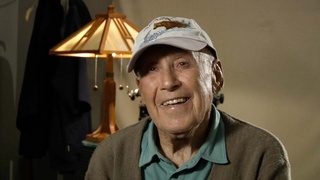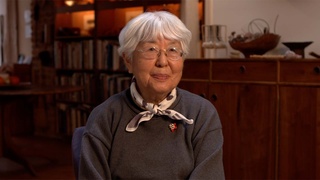Interviews
Difference between experiences of youth and older people in WWII camps
There’s a big separation of people in camp. The under high school, I would say, I had good memories, yes. And you see that in the reunions. So the reunions of the camp of 1945 graduates are the biggest of all the camps. You see that even today. So it means that all of those people remember and want to get together. All the ’46 graduates, little bit less. That’s my age. And ’47 graduates almost have no reunions—that’s like my younger brother—because maybe they were too young. But still I think it’s true that the children had a lot of people to play with. And I was constantly playing.
So over high school, this is where it cuts, where people have, I’m sure, suffered and have been disadvantaged by the camp. Their careers were interrupted, studies interrupted. And so either they had to get out of camp and try to go to school somewhere. Or if they stayed in camp, I’m sure it was not good for them. And then the older people like my parents, who had a business, they had to suffer a lot because they lost the business. They were living in these very small rooms and deprived of everything that they really had. So they don’t have their own kitchen, their own bathroom they don’t have. So I’m sure they suffered. And as I say, being the younger child, I wasn’t aware of that too much.
Date: February 10, 2004
Location: California, US
Interviewer: Gwenn M. Jensen
Contributed by: Watase Media Arts Center, Japanese American National Museum.
Explore More Videos

Marriage and Returning to US
(1916 - 2013) Member of the U.S. Military Intelligence Service


Feeling prejudice while looking for jobs
(1919 - 2015) Nisei who served in World War II with the 442nd Regimental Combat Team

Generosity of the Italians
(1919 - 2015) Nisei who served in World War II with the 442nd Regimental Combat Team

Invited to teach at Harvard by his boss
(1919 - 2015) Nisei who served in World War II with the 442nd Regimental Combat Team

The riot in Manzanar
(b. 1921) Nisei veteran who served in the occupation of Japan

Father making shell brooches at Topaz
(b. 1934) Award-winning Disney animation artist who was incarcerated at Topaz during WWII

The Dopey bank that survived the war
(b. 1934) Award-winning Disney animation artist who was incarcerated at Topaz during WWII

Evacuated to the Jungle
(b. 1938) Philipines-born hikiagesha who later migrated to the United States.

Captured by Guerillas after bombing of Pearl Harbor
(b. 1938) Philipines-born hikiagesha who later migrated to the United States.

Grandfather picked up by US Army
(b. 1952) Former banking executive, born in Hawaii

Father's business partner operated their farming business during WWII
(b. 1935) Sansei businessman.

Father was convinced the constitution would protect him
(b. 1935) Sansei businessman.

The lack of discussion about family’s incarceration in Amache
Sansei judge for the Superior Court of Los Angeles County in California

